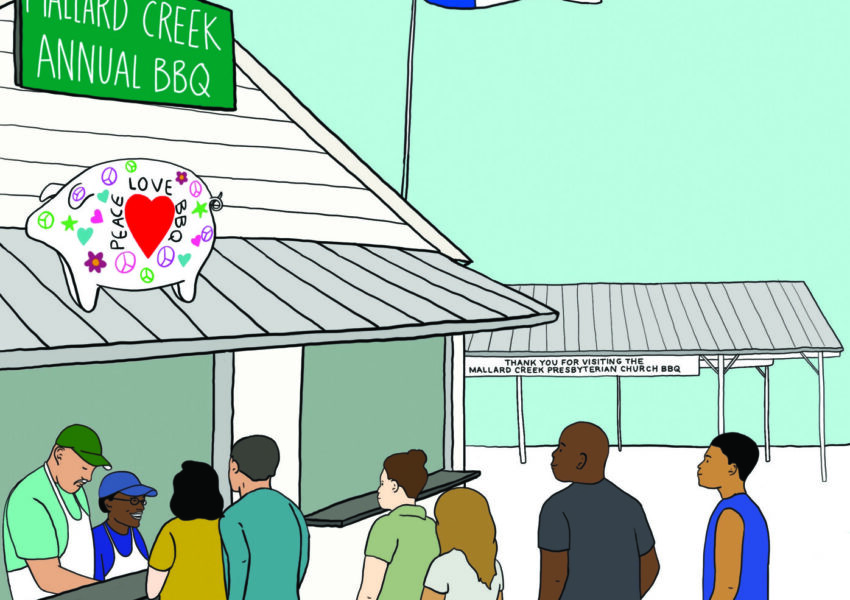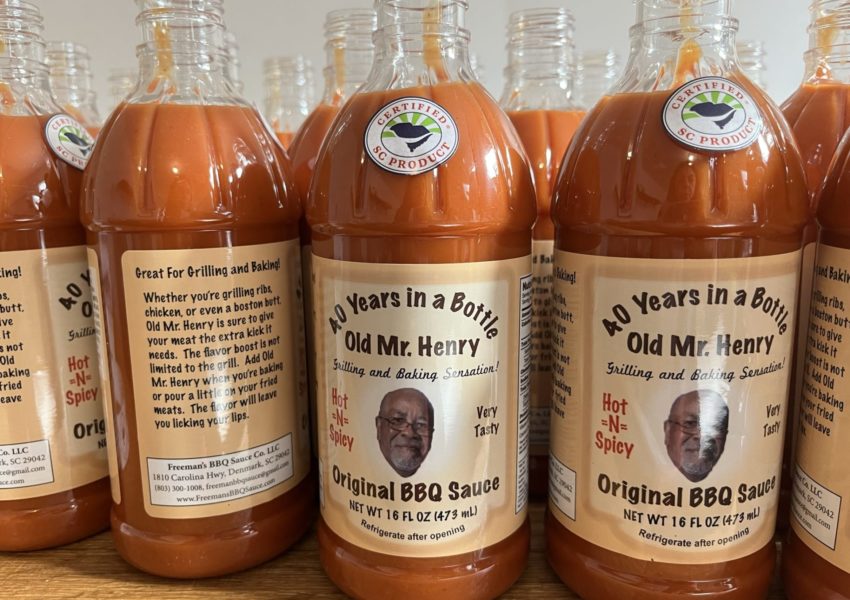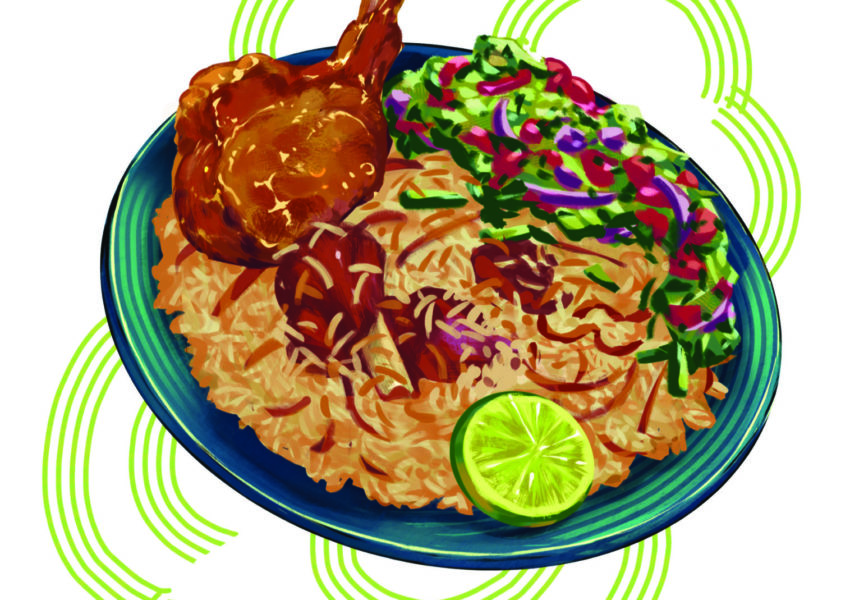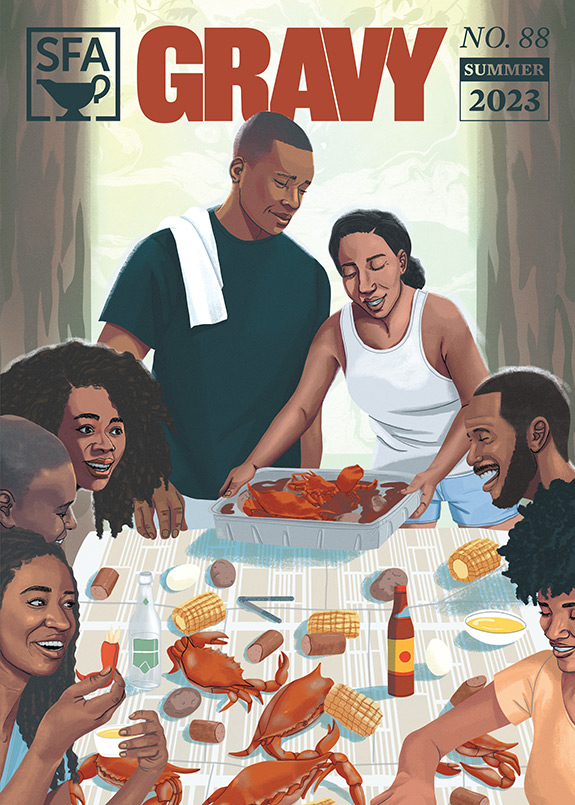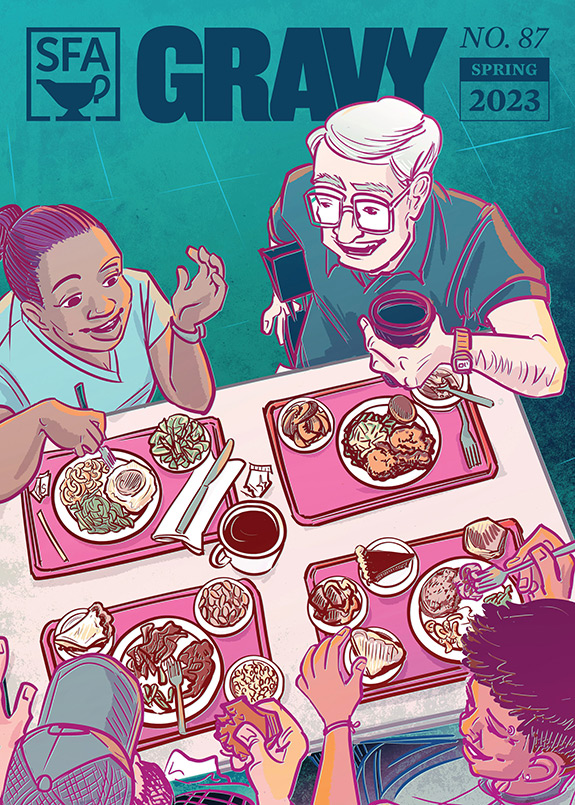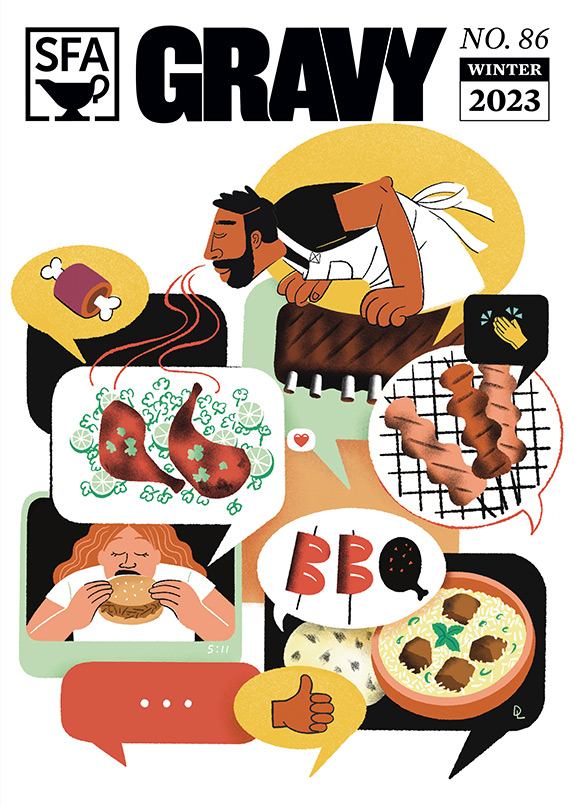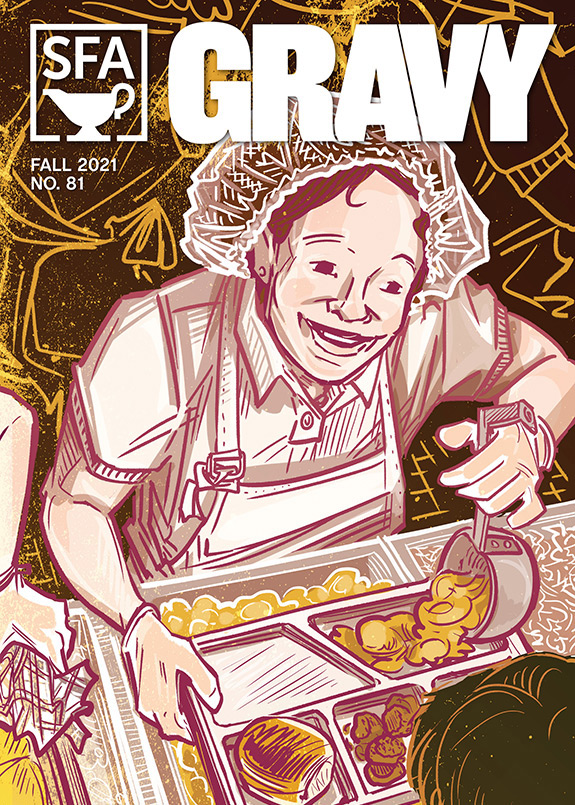The Skylight Inn isn’t going anywhere. But as of this week, you can also visit Sam Jones BBQ in Winterville (Greenville), NC. Check out their Facebook page for more details.
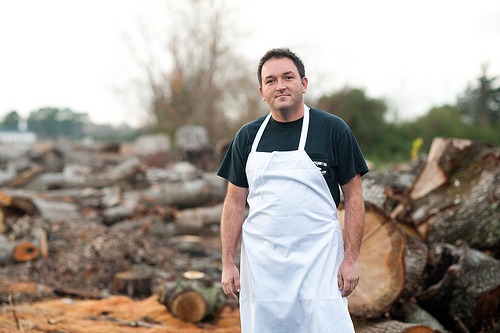
Where There’s Smoke
On fighting—and taming—fire
by Kevin Pang
Samuel Jones, fire chief in the town of Ayden, North Carolina, can describe in lucid detail his first encounter with a structure fire.
He was twelve. On Fridays he would spend the night at his grandparents’ house. One evening Grandpa Pete had just finished supper when a neighbor hollered into their home: “Mr. Jones, your stable is on fire!” Inside the stable were Pete Jones’s 16 racehorses. Young Samuel and his cousin J.D. bolted for the stable, hoping to bring out the horses before it was too late.
As he ran, Samuel saw neighbors pull up in pickup trucks and change out of their work clothes and into fire suits. They were volunteer firefighters, and, like Samuel and J.D., they ran toward the fire and saved all but two of the horses.
By the time Jones reached high-school age, he didn’t work at a video store or a dairy bar. In 1997 he joined the fire department. Today, as chief, he oversees 44 volunteer firefighters in his hometown. He sleeps with his fire department pager on. For the first month after his daughter was born in 2012, Jones slept in the guest bedroom for fear of waking the baby. Sometimes in the middle of the night, he has to get out of bed and run toward the fire.
Outside Ayden—population 5,000 and change—Samuel Jones is not known for firefighting. He is the face of Skylight Inn, the eastern North Carolina joint beloved for whole-hog barbecue. Six days a week, the dome-topped restaurant echoes with the machine-gun staccato of cleavers chopping through peppered-and-vinegared pork. They top each serving with coleslaw and a slab of cornbread, much in the same way it’s been served here for nearly seventy years. Locals refer to Skylight by a more endearing and familiar name: Pete Jones BBQ. Samuel Jones is the seventh generation in a family of whole-hog pitmasters.
“You need to look, listen, and feel,” says Jones, speaking of both vocations. “When you arrive at a structure fire, if there’s no fire visible and there’s something burning inside, you can tell what’s happening by the behavior of smoke coming out. I can also pull up to the parking lot at Skylight and just from the smoke coming out of the smokehouse, I can tell you what’s going on.”
Chart the professions of firefighters and barbecue pitmasters, and the Venn diagram overlaps more than you’d think. Pitmasters such as Jackie Hite, Woodrow Washington, Ricky Scott—all have moonlighted as firefighters.
“Seeing those fire trucks and lights going down the street, man, I wanted to be one of those,” says Scott, a firefighter for 27 years and proprietor of the Thursdays-only Ricky’s BBQ near Kingstree, South Carolina. “The brave, the finest, helping save lives—something I always wanted to be.”
You would think firefighters hate fire, something they spend their professional lives trying to smother and extinguish. This is a fallacy. Firefighters love fire. They savor the challenge of taming a force of nature before it runs wild.
Thumb to the wind, a good 85 percent of fire stations have someone on staff proficient with a smoker or grill. Samuel Jones says many rural fire departments, especially ones with tight budgets, stage barbecues to raise funds.
Understanding the science of combustion contributes to the barbecue pitmaster’s fortunes. On the first day of firefighting academy, trainees learn about the fire tetrahedron. For fire to exist, three components must be present: fuel plus oxygen plus heat.
For Craig Kimmel, a firefighter-paramedic of twenty-three years with the Seminole County Fire Department in Florida, one of the most important lessons he’s carried over to the barbecue world is the ability to read smoke.
“Different colors of smoke tell you certain things,” says Kimmel, who also runs the FireHouse BBQ food truck in Orlando. “Black smoke indicates it’s not burning clean. You wipe a wet finger on your meat and it comes away black. It’s all soot and carcinogens.”
Kimmel says not allowing proper ventilation in the pit causes stale smoke, which turns meat bitter.
What pitmasters want, Samuel Jones says, is a sheer white smoke. Jones explains that smoke is just unburned gases, which means it’s also flammable. As smoke gets darker, it approaches its ignition point. “Once it gets pitch black, the firefighter can’t be far into the room,” he says. “I’m talking three or four feet into the room. When that happens, he won’t be able to get out.”
The best pitmasters rely on a host of other fire-science principles. The delicate balance of the fire tetrahedron is required to maintain a consistent burn. If the fuel, oxygen, or heat goes out, the fire will die. Water is another important consideration: Some pitmasters, especially those on the South Side of Chicago, will regulate temperature and moisture by spraying water into their pits with a garden hose. A droplet of water expands 1,600 in volume when it vaporizes into steam. More moisture equals more smoke.
“It’s a brotherhood in the fire department,” says Kimmel, who spends more than half of the work week on his barbecue catering business and the rest on firefighting. “The guys seem to always do something together off duty. We eat together. A lot of times, you know these people a lot more than your own family.”
“It’s the fact that you’re in control of something that’s way more powerful than anything you can deal with,” says Robby Royal, EMS and fire chief in Turner County, Georgia, and captain of the competitive barbecue team Rescue Smokers. “You’re holding the power to how hot it’s going to get. It’s a domination factor. You have control over your pit.”
On August 28, 2008, Samuel Jones’s two worlds converged. He had just returned from helping battle a blaze two fire districts over. Back at the Skylight Inn, fire conditions were prime. A hot summer evening, humidity low, with winds blowing from the southeast between 30 and 40 miles per hour. Jones asked his pitmaster whether he left anything burning in the chimney. He said no. Still, the smokehouse was a constant 180 to 200 degrees. All it would take was the right amount of wind, residual heat, and some rendered pork fat for fuel.
Three and a half minutes after Jones locked up the smokehouse, brown smoke started billowing from the chimney. Soon, flames leapt out of the vents.
“You take your apron off and put your fire suit on,” Jones says, “and you went from manager to firefighter in charge.”
It took 4 hours for Jones to call the “all clear” that night. It was so hot inside the smokehouse that the hosed-down pits became troughs of boiling water.
“Normally, we put the fire out, I sit and talk to the homeowner, and then we all go back to our normal lives,” Jones says. “Only difference with this was I took my fire helmet off and put my apron back on, and went, ‘dang.’ Almost like you’re being robbed to some extent. Because that was our livelihood.” Rebuilding the Skylight Inn smokehouse took six months.
The economics of small-town firefighting are brutal. The position of Ayden fire chief pays Samuel Jones a stipend of $2,400 a year. His department pays volunteers $9 an emergency call that covers maintenance and gas. A check is doled out twice a year as gratuity.
Calling firefighting a second career is a wrong choice of words. Jones considers it a civic duty. It just happens barbecue guys like himself know a thing or two about how to tame fires.
“If we had to do away with gratuity because of budget constraints, one or two might bellyache,” Jones says, “but the rest of them would have no problem with it. The way I look at it, a lot of things have to be done in our community for free that I don’t possess the skills to do. But I possess the skill to be chief of the fire department. I don’t ever see myself not being a firefighter. I never intend on getting out.”
***
Read the SFA’s oral history with Sam Jones.
This story first appeared in the fall 2015 issue of our Gravy quarterly. The author, Kevin Pang, is a staff writer at the Chicago Tribune.
Thank you, SFA members, for making Gravy stories like this one possible. Join or renew your SFA membership to receive a subscription to Gravy.


